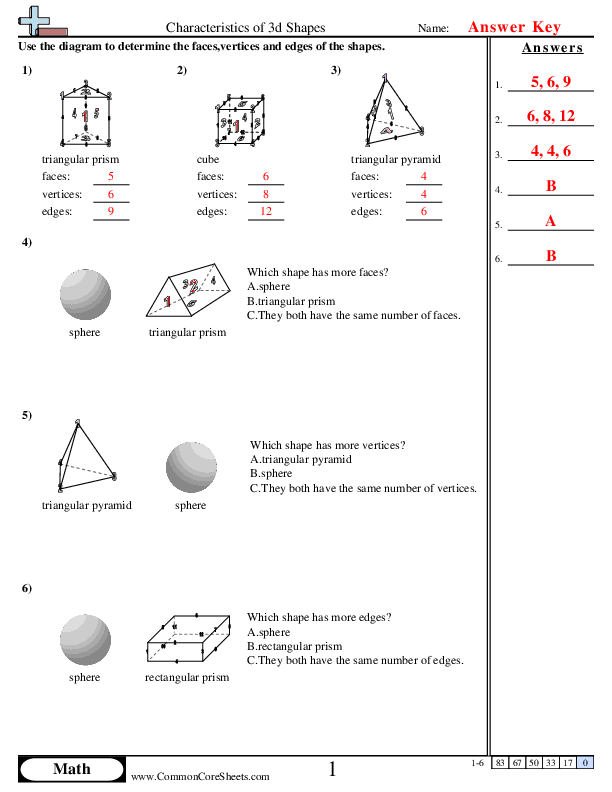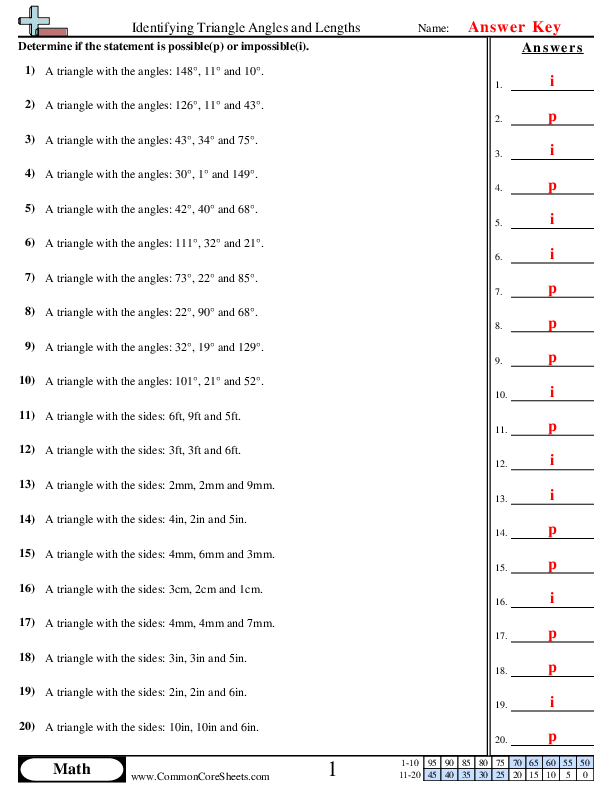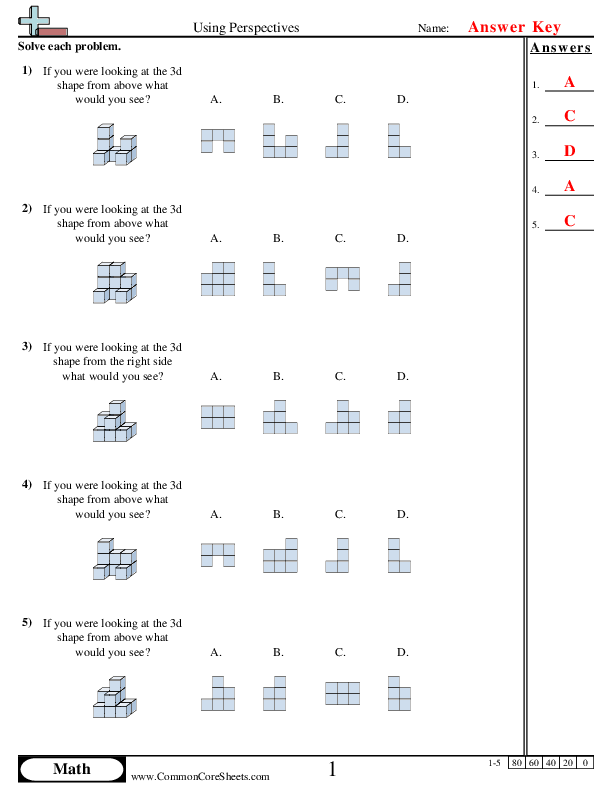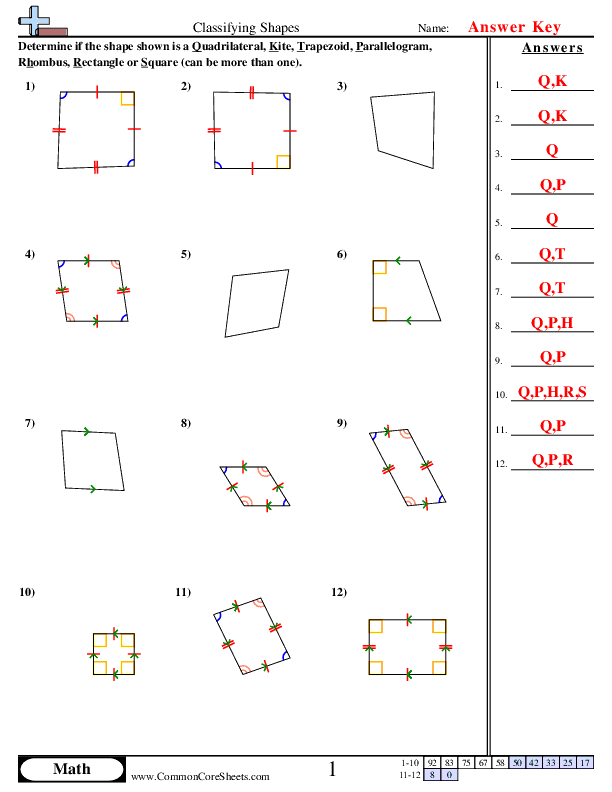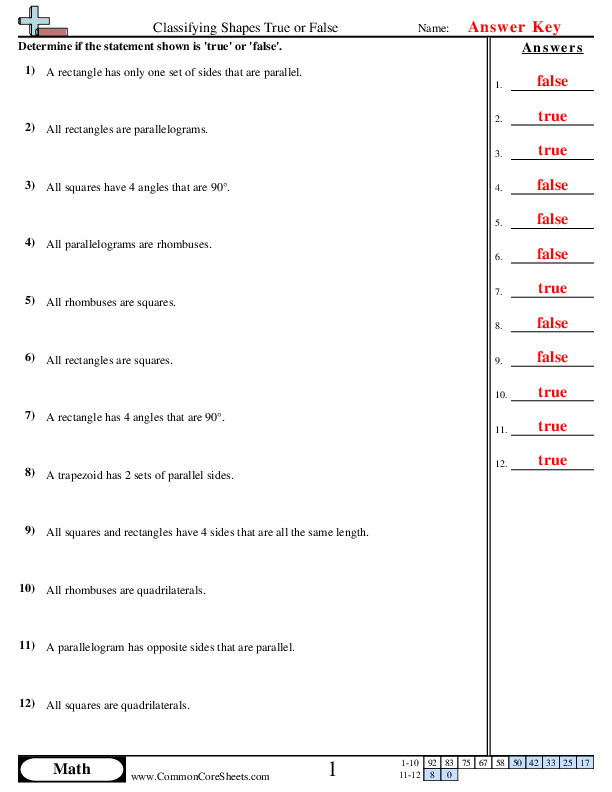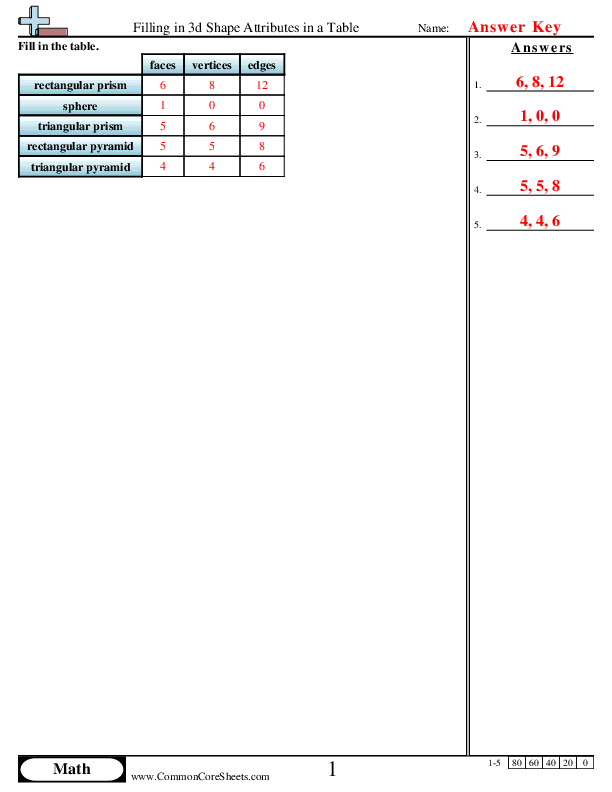shape attributes Worksheets
Discover the best free shapes worksheets on the internet. Our worksheets help children learn about reflections, translations, the number of sides for everyday shapes and more! We have a wide variety of worksheets that include shapes ranging from basic triangles to complex hexagons and octagons. With our selection, your child can practice recognizing shapes while also learning about their properties. Our worksheets are easy to use and will help your child recognize shapes in a fun environment! With common core sheets, you can be sure you’re giving your child the best learning experience around. Try out our free shapes worksheets today!
Browse Sheets By Problem Type
Each worksheet has 12 problems identifying the attributes and characteristics of 3 dimensional shapes.
Version 1
Version 2
Version 3
Version 4
Version 5
Version 6
Version 7
Version 8
Version 9
Version 10
Grab 'em All
Create New Sheet
Each worksheet has 20 problems determining if the angles or the side lengths create a triangle.
Version 1
Version 2
Version 3
Version 4
Version 5
Version 6
Version 7
Version 8
Version 9
Version 10
Grab 'em All
Create New Sheet
Each worksheet has 9 problems determining the 2d shape that is created from a slice in a 3d shape.
Version 1
Version 2
Version 3
Version 4
Version 5
Version 6
Version 7
Version 8
Version 9
Version 10
Grab 'em All
Create New Sheet
Each worksheet has 5 problems determing what a 3d shape would look like from a different perspective.
Version 1
Version 2
Version 3
Version 4
Version 5
Version 6
Version 7
Version 8
Version 9
Version 10
Grab 'em All
Create New Sheet
Each worksheet has 12 problems classifying a shape based on the physical properties.
Version 1
Version 2
Version 3
Version 4
Version 5
Version 6
Version 7
Version 8
Version 9
Version 10
Grab 'em All
Create New Sheet
Each worksheet has 12 problems determining if the qualities of a shape are true or false.
Version 1
Version 2
Version 3
Version 4
Version 5
Version 6
Version 7
Version 8
Version 9
Version 10
Grab 'em All
Create New Sheet
Each worksheet has 7 problems determining which shape a statement describes.
Version 1
Version 2
Version 3
Version 4
Version 5
Version 6
Version 7
Version 8
Version 9
Version 10
Grab 'em All
Create New Sheet
Each worksheet has 5 problems filling the faces, vertices and edges of 3d shapes.
Version 1
Version 2
Version 3
Version 4
Version 5
Version 6
Version 7
Version 8
Version 9
Version 10
Grab 'em All
Create New Sheet
Each worksheet has 18 problems identifying the faces, vertices and edges of 3d shapes.
Version 1
Version 2
Version 3
Version 4
Version 5
Version 6
Version 7
Version 8
Version 9
Version 10
Grab 'em All
Create New Sheet
